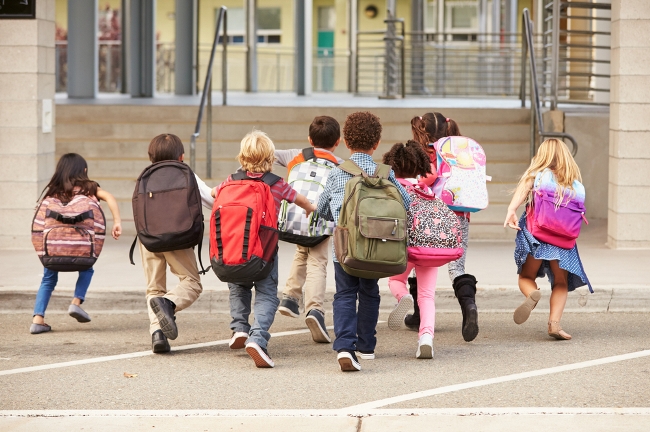Did you hear that groan? That’s the sound of children across the region thinking about school starting back. Fortunately, a few easy steps can help you ease their transition back to school.
Whether your family hit the road for vacation or stayed home and enjoyed the local sights, your kids had a blast this summer. A more relaxed daily routine was probably half the fun. But now’s the time to get back in gear.
At this point, you may have already loaded up on school supplies. And your kids may have even chosen their first-day outfits. But preparing them for school is about more than that.
Not sure where to start to get their bodies and minds ready for school? These three steps will help make going back to school run a bit more smoothly.
Reestablish school routines
When adults are on vacation, our routines naturally change. We tend to go to bed later, sleep longer, eat at random times and even wear different clothes.
It’s no different for kids. When the last bell rings and kids leave school in the spring, the schedule generally shifts. Transitioning back to a school schedule can cause anxiety and stress for both kids and parents.
For at least a week before school starts, practice a school-day routine. Your kids should wake up and get ready at the time they’ll need to once school begins. Because it can be difficult to prod kids out of bed, schedule activities away from the house in the mornings to get them out the door.
Help reset your kids’ eating routine by eating breakfast, lunch, and dinner when they usually will once school begins. It’s especially important to learn their lunch times and have them eat then, so they’ll retrain their bodies to not want lunch earlier or later than that.
Retrain sleep habits
We talked a little about having your kids wake up and get ready on their school schedule. But it’s vitally important to reset their bedtimes, too.
Most kids go to bed later during the summer. It can take a little bit of time to get back on track with an earlier bedtime.
The amount of sleep kids need varies by their age. Once you know how many hours to aim for, take the time they’ll need to wake up and count back the recommended number of sleep hours.
So, for example, if your first-grader needs to wake up at 6 a.m., he should go to bed by no later than 9 p.m. If that doesn’t seem to be enough sleep for him to feel at his best, edge the bedtime backward until it works.
Make the transition gradually. Over a period of a couple weeks, slowly move bedtime backward from the summer bedtime to what’s needed for school.
Build independence
For older kids, this step may not be difficult. They’re accustomed to taking care of themselves in many ways.
For younger kids, though, getting used to going through the day without mom and dad can be hard. If you have kids going to school for the first time, talk with them about what the school day will entail.
You may even want to step through an entire day’s routine to help them understand what they’ll need to do. If your school allows, go to the school and walk down the hallways to see where the classroom is, along with other important rooms such as the cafeteria and gym.
Talk with kids about their responsibilities, which may include writing down assignments, bringing home books and homework and, for little kids, tying their shoes and writing their name.
Looking for a pediatrician for a back-to-school or sports physical? Find one here.







